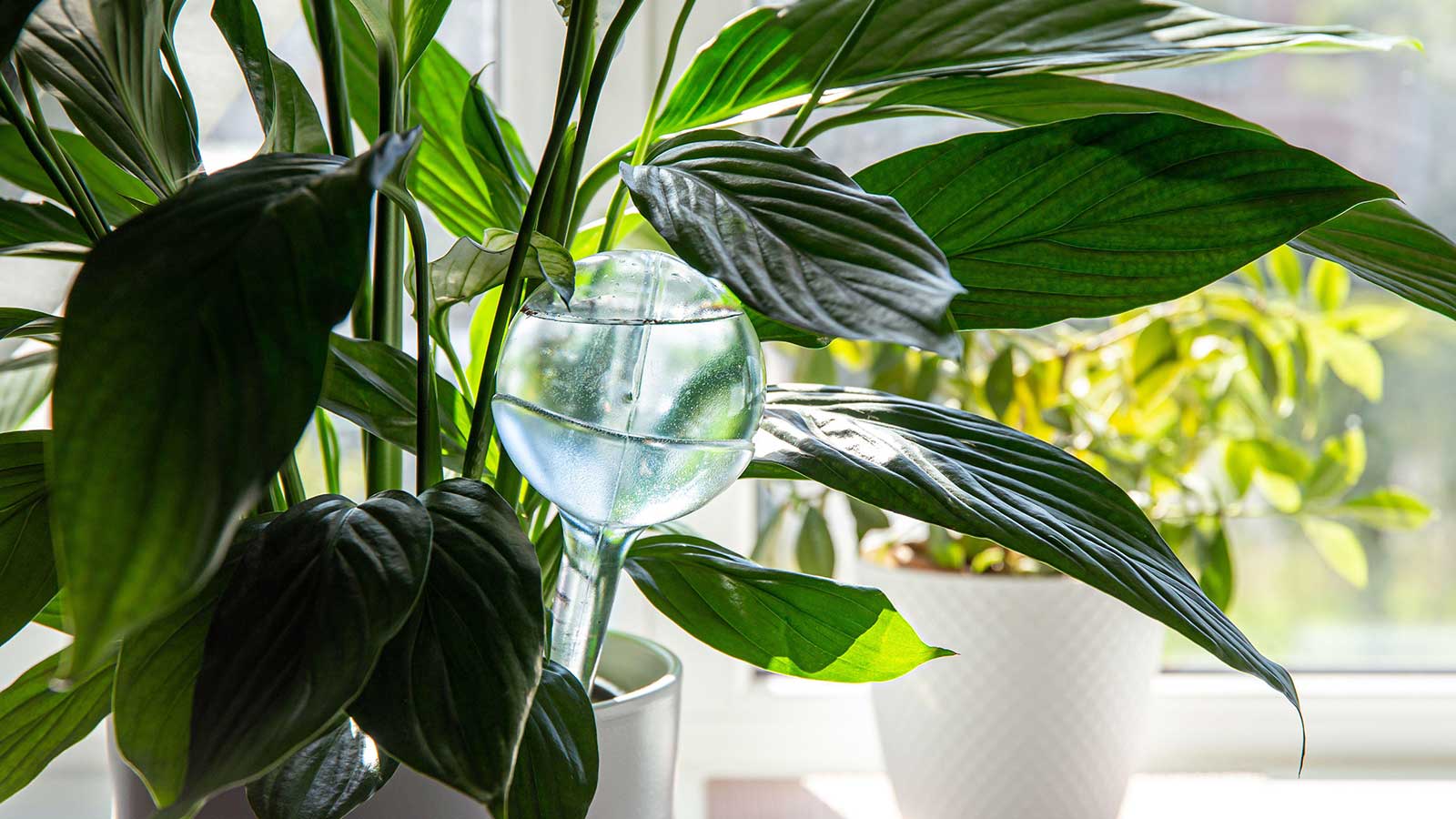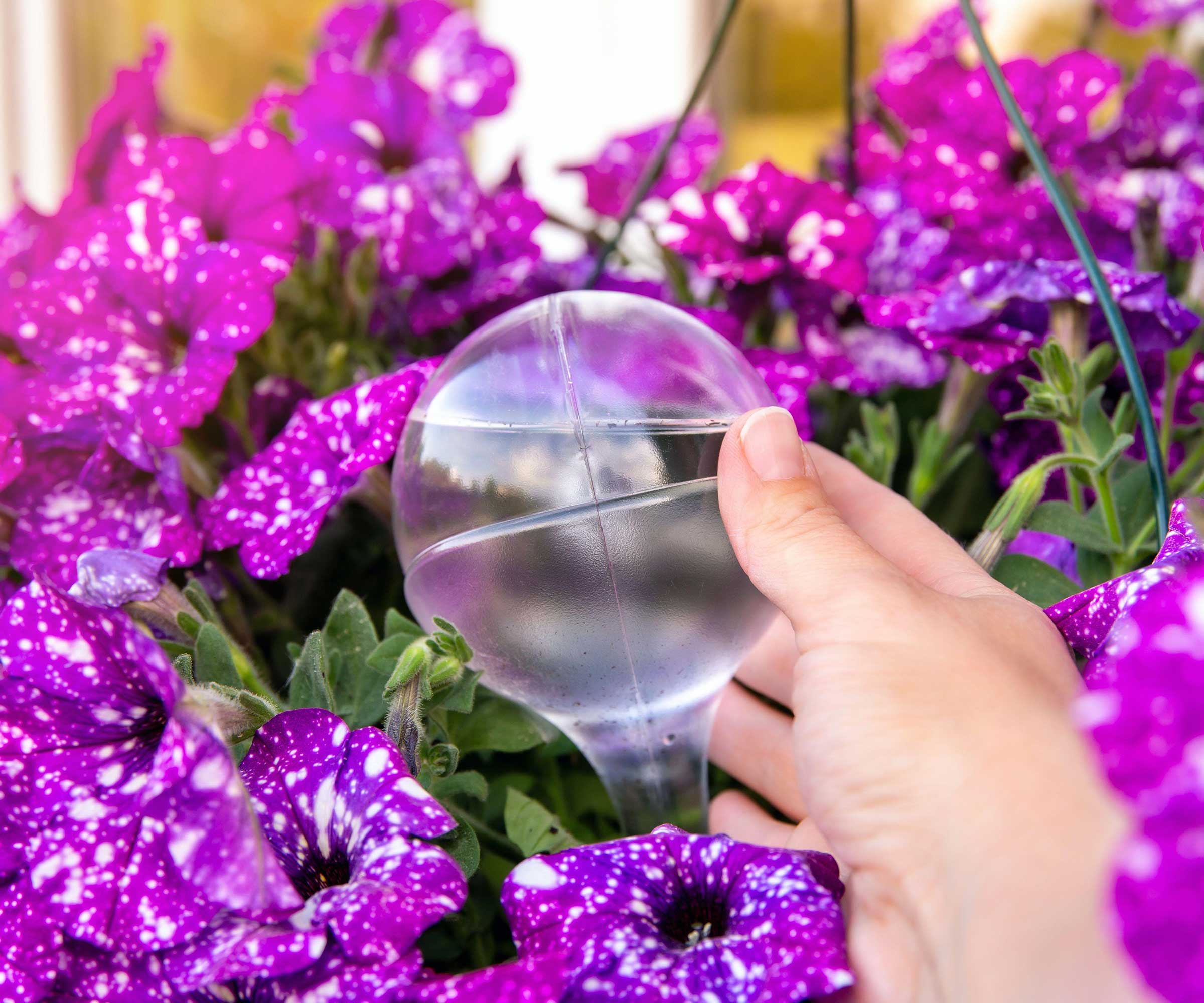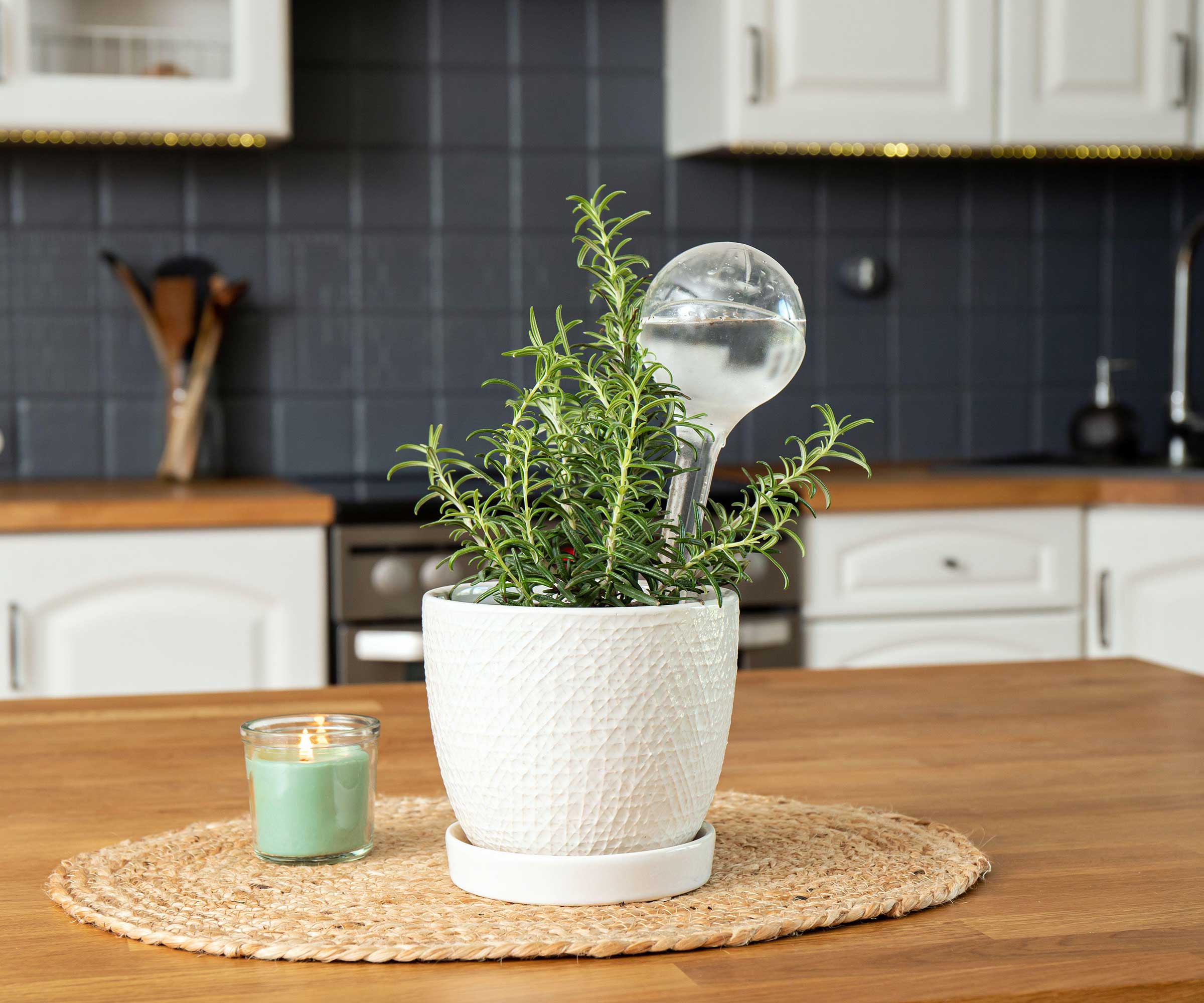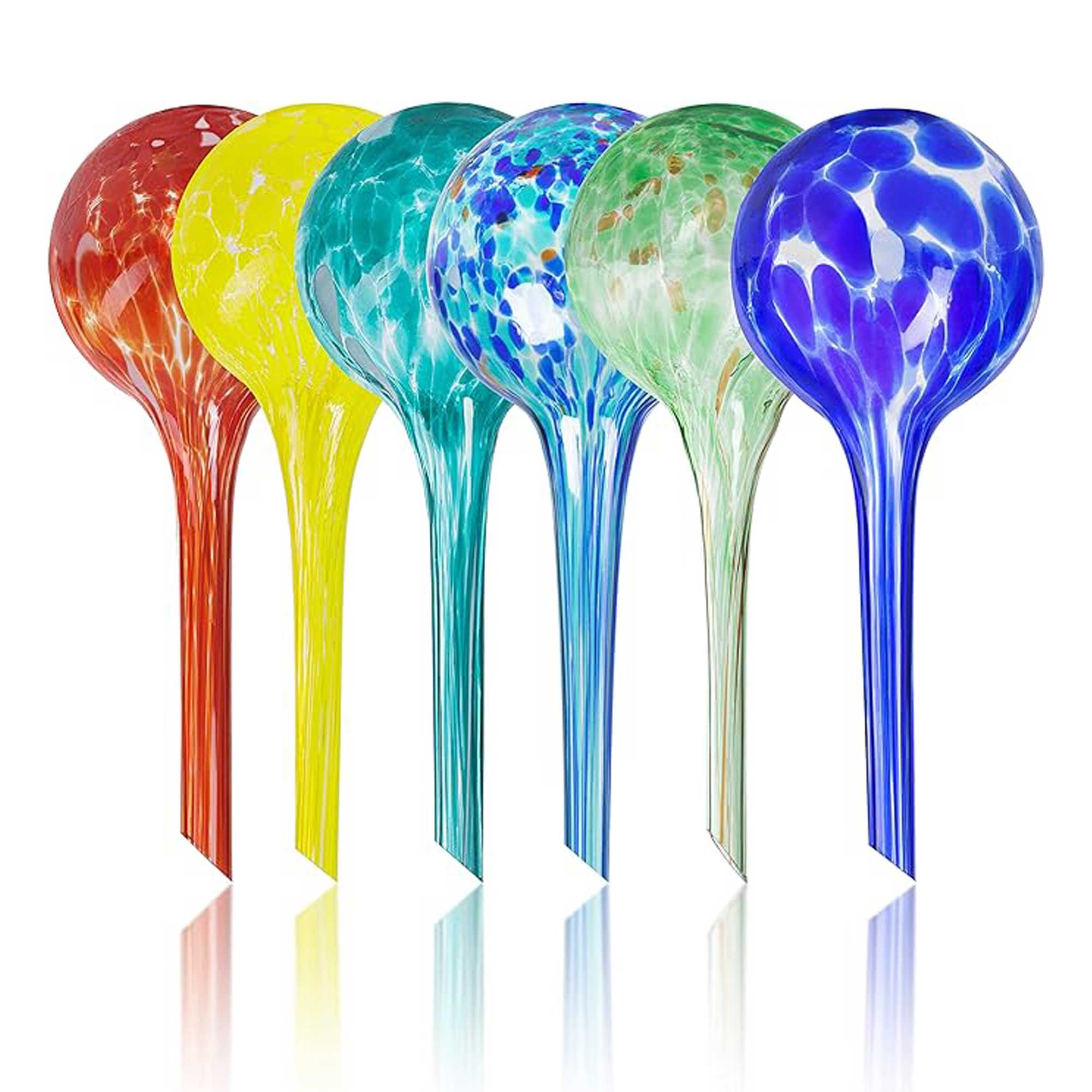What are plant watering globes and do I need them? Experts weigh in
These simple gadgets are a game-changer when caring for indoor potted plants


If you need a hand hydrating your houseplants, whether that's day-to-day or during a trip away from home, watering globes are a cheap and effective solution. Made of plastic or glass, they are small devices that you fill with water and pop into your potted plants. They then release the water over time.
I first found out about them last year, when researching ways to water my plants on vacation. After soaring temperatures, I expected a sorry sight on my return, but they kept my indoor garden happy and healthy. And it seems I'm not the only one they've impressed.
The benefits of plant watering globes

Watering globes can help keep potted plants thriving
Diane Kuthy, the founder of How to Grow Everything, has also become a recent fan of these watering devices. 'I live in Idaho and have a few tropical indoor plants (like Meyer lemons and hog plum trees) that require their soil to be perfectly moist at all times,' she says. 'I have a lot of houseplants, so keeping up with their watering needs has been a challenge.'
She started using watering globes made of glass, with terracotta spikes attached to the ends. 'The globes are filled with water and the water slowly leaches into the soil via the permeable terracotta spikes,' she explains. The water will only leach into the soil if the soil can hold it.
Now, Diane's tropical plants are thriving more than she's ever seen before. 'With the perfect amount of water, the plants are growing every day, sprouting new leaves, and even budding more fruit than they ever have compared to the years I've spent hand-watering them.'
These globes aren't just useful for more high-maintenance plants, or for houseplant care while you're on holiday. They are also helpful for individuals who tend to either underwater or overwater their plants, thereby minimizing the risk of dehydration or root rot, points out Juan Palacio, CEO of BloomsyBox.

Diane Kuthy is the founder and lead plant expert at How To Grow Everything, a collection of comprehensive grow guides for every plant and vegetable. Diane has over 10 years of gardening experience and she currently manages a 5-acre farm, a four-season greenhouse, over 50 perennial fruit and vegetable varieties, and a large indoor plant conservatory.
How to use plant watering globes

Watering globes hydrate plants steadily
Diane says, 'All you have to do is fill the globe up with water and place it into the soil. When the water runs out, simply refill the globe and place it back into the soil.'
Design expertise in your inbox – from inspiring decorating ideas and beautiful celebrity homes to practical gardening advice and shopping round-ups.
When watering most houseplants, try to avoid using tap water, if possible. Harvested rainwater is a great alternative.
'Water your plants thoroughly before inserting the watering globe,' recommends Amy Enfield, senior horticulturist at ScottsMiracle-Gro. 'If a watering globe is placed in dry soil, it will empty very quickly.'
Juan recommends making a hole in the soil first, before inserting the globe, to prevent the soil from clogging the tube. Amy says that ideally, the stem of the watering globe should be placed near the plant’s roots – but not so close to the plant’s stem that you potentially damage them.
'Also, consider the size of the globe relative to the plant and pot size,' Juan says. 'Larger plants and pots may require a bigger globe or more frequent refills.'
You may also wish to double up on globes for bigger plants. When I went away, I put two in my monstera's pot, for instance. Amy recommends testing out how long your watering globes last a few weeks before you leave.
Top tip: 'For plants that like their soil kept on the drier side, like succulents, water globes may keep the soil too moist,' notes Amy.

Amy has over 25 years of experience in the lawn and garden industry and has been with ScottsMiracle-Gro for 11 years. She has a BS and MS in Horticulture from Michigan State University and a Ph.D. in Plant and Environmental Sciences from Clemson University.
FAQs
What can I use as an alternative to plant watering globes?
You can make a DIY garden watering system using plastic bottles to keep your houseplants happy. It works similarly to a watering globe, plus, it's a good way to recycle waste.
Consider shopping for self-watering plant pots, too, such as these from Amazon.
Can you use watering globes outdoors?
Watering globes could help maintain a container garden in hot weather. But, you'd need a good few to keep borders sufficiently hydrated.
An outdoor irrigation system set on a timer can be more effective at keeping flowerbeds in top condition. Don't forget to add a layer of mulch around your plants, too, which is great at retaining moisture.
Opting for naturally drought-tolerant plants is also a good option if you want to cut down on maintenance.
How do you clean a plant watering globe?
Amy recommends cleaning your watering globe regularly to make sure it functions properly.
'Use a narrow pipe cleaner to clear any dirt or debris out of the stem,' she says. 'If algae or mold starts to form in the globe, add some baking soda and either lemon juice or vinegar and swirl around for a minute or two before rinsing thoroughly.'
'While plant watering globes can be highly beneficial, they are not necessarily essential for every plant enthusiast,' says Juan. 'The necessity of these globes largely depends on your personal schedule, the type of plants you are caring for, and your environment.'
If you haven't always got time for summer houseplant care, they're worth it in my books. I'll definitely be using mine again during my next trip away.

Holly started writing about gardening five years ago, and she is a regular contributor to Homes & Gardens. She has also written many gardening features for Woman & Home and Real Homes, too. She has previous experience as a professional gardener, where she helped to plant and maintain private gardens. Holly has also looked after allotment plots over the years and loves to grow her own flowers and veggies from seed. In her spare time, she enjoys visiting local gardens, botanical drawing, and tending to her ever-growing collection of houseplants.
